Preventive Dentistry :
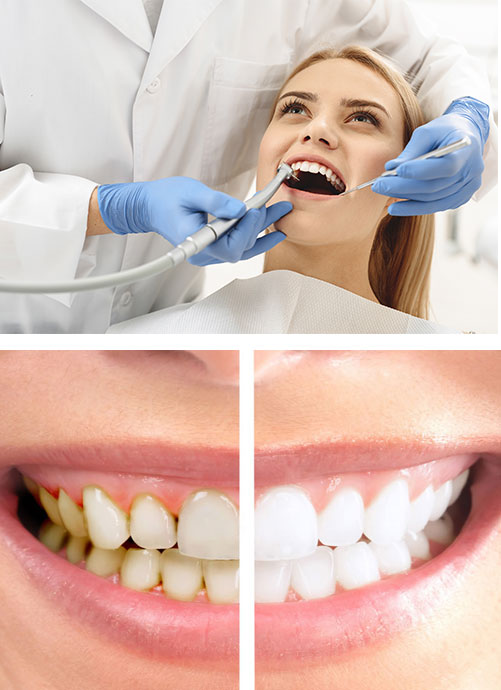 Professional teeth cleaning by a certified dental hygienist aims to remove plaque, tarter and stains that have accumulated on the teeth. Even with routine brushing and flossing of your teeth and gums, tarter can develop.
Professional teeth cleaning by a certified dental hygienist aims to remove plaque, tarter and stains that have accumulated on the teeth. Even with routine brushing and flossing of your teeth and gums, tarter can develop.
The professional cleaning of teeth is a crucial part of good oral hygiene and is needed periodically to maintain the health of your teeth and gums.
Two of Types Cleaning:
Routine dental cleanings and deep dental cleanings are two very different dental services. We will take a closer look at the differences between routine dental cleanings and deep dental cleanings.
Routine dental cleanings are designed to help you keep your teeth and gums healthy. It helps you maintain your oral health by removing bacteria and tartar from hard-to-reach areas in your mouth.
Who Needs a Routine Dental Cleaning?
Everyone, no matter your age, needs regular routine dental cleanings. The amount of routine dental cleanings you will need will depend upon your oral hygiene, previous dental problems, and genetics. Some people may be able to come in for a regular routine dental cleaning every six months, while others may need to come in every three months.
Fluoride Application - Prevent cavities :
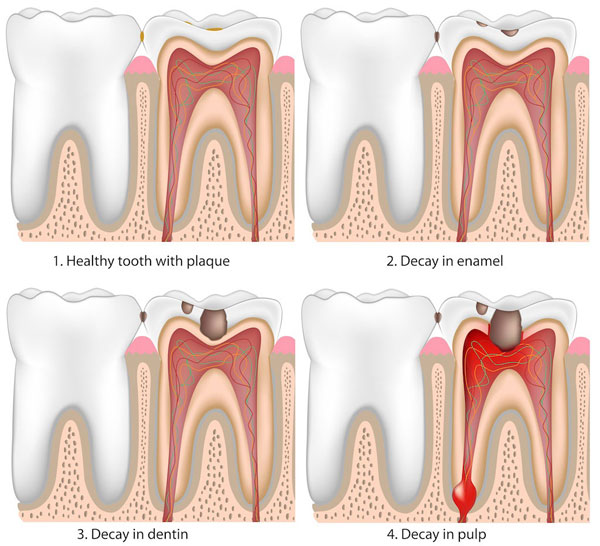 Fluoride is a natural mineral that builds strong teeth and prevents cavities. It’s been an essential oral health treatment for decades. Fluoride supports healthy tooth enamel and fights the bacteria that harm teeth and gums. Tooth enamel is the outer protective layer of each tooth.
Fluoride is a natural mineral that builds strong teeth and prevents cavities. It’s been an essential oral health treatment for decades. Fluoride supports healthy tooth enamel and fights the bacteria that harm teeth and gums. Tooth enamel is the outer protective layer of each tooth.
The following can increase your risk of cavities: excessive drug or alcohol use, eating disorder, poor oral hygiene, lack of professional dental care, poor diet, dry mouth, or decreased saliva, weak enamel.
If your child is under 3 years old, they should only brush their teeth with close supervision. Apply only a thin layer of fluoride toothpaste to their toothbrush.
Benefits of fluoride :
1. Fluoride works by restoring minerals to tooth surfaces where bacteria may have eroded the enamel. It can also inhibit the growth of harmful oral bacteria and further prevent cavities
2. Fluoride benefits both children and adults. The earlier children are exposed to fluoride, the less likely they are to develop cavities.
Prevention :
Brush with fluoride toothpaste after eating or drinking. Brush your teeth at least twice a day and ideally after every meal, using fluoride-containing toothpaste. To clean between your teeth, floss or use an interdental cleaner.
Rinse your mouth. If your dentist feels you have a high risk of developing cavities, he or she may recommend that you use a mouth rinse with fluoride.
Visit your dentist regularly. Get professional teeth cleanings and regular oral exams, which can help prevent problems or spot them early. Your dentist can recommend a schedule that's best for you.
Eat tooth-healthy foods. Some foods and beverages are better for your teeth than others. Avoid foods that get stuck in grooves and pits of your teeth for long periods, or brush soon after eating them. However, foods such as fresh fruits and vegetables increase saliva flow, and unsweetened coffee, tea and sugar-free gum help wash away food particles.
Consider fluoride treatments. Your dentist may recommend periodic fluoride treatments, especially if you aren't getting enough fluoride through fluoridated drinking water and other sources. He or she may also recommend custom trays that fit over your teeth for application of prescription fluoride if your risk of tooth decay is very high.
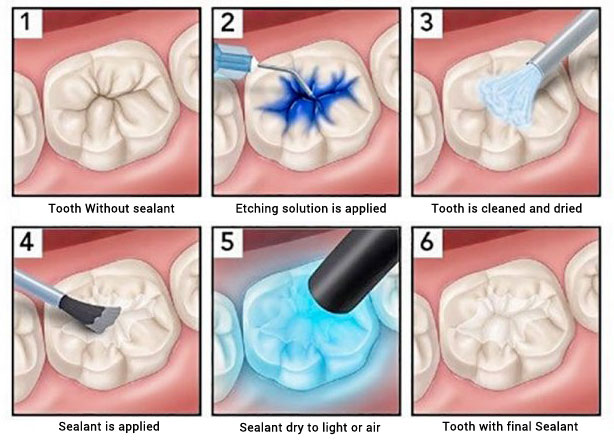 Sealants are systems that can be applied to the occlusal surfaces of teeth to penetrate anatomic surface pits and fissures and form a physical barrier on the tooth surface.
Sealants are systems that can be applied to the occlusal surfaces of teeth to penetrate anatomic surface pits and fissures and form a physical barrier on the tooth surface.
Sealants are effective in preventing and arresting pit-and-fissure occlusal caries lesions of primary and permanent molars in children and adolescents compared to the non-use of sealants or use of fluoride varnishes.
How Do Sealants Work :
After sealant has been applied it keeps those bits of food out and stops bacteria and acid from settling on your teeth, just like a raincoat keeps you clean and dry during a storm.
Sealants : Applying the sealant is a simple and painless process.
1. First, the teeth that are to be sealed are thoroughly cleaned.
2. Each tooth is then dried and cotton or another absorbent material is put around the tooth to keep it dry.
3. An acid solution is put on the chewing surfaces of the teeth to roughen them up, which helps the sealant bond to the teeth.
4. The teeth are then rinsed and dried.
5. Sealant is then painted onto the tooth enamel, where it bonds directly to the tooth and hardens. A special intense white light -- ‘curing’ light -- is used to help the sealant harden.
 Routine dental visits frequently include X-rays to help your dentist accurately assess your dental health. In addition, X-rays help the dentist find and treat dental problems early in their development, which can potentially save you money, unnecessary discomfort, and maybe even your life.
Routine dental visits frequently include X-rays to help your dentist accurately assess your dental health. In addition, X-rays help the dentist find and treat dental problems early in their development, which can potentially save you money, unnecessary discomfort, and maybe even your life.
Dental X-rays Needed :
1. The frequency of needing dental X-rays depends on your dental health status.
2. Some people may need X-rays as often as every six months; others with no recent dental or gum disease and who visit their dentist regularly may get X-rays only every couple of years.
3. If you are a new patient, your dentist may take X-rays as part of the initial exam and to establish a baseline record from which to compare changes that may occur over time.
Keeping X-rays to a Minimum?
![]() Here are a few ways you can save yourself the cost and radiation exposure of potentially unnecessary dental X-rays.
Here are a few ways you can save yourself the cost and radiation exposure of potentially unnecessary dental X-rays.
![]() Maintain good dental health with a diligent routine of brushing and flossing, and see your dentist regularly for checkups.
Maintain good dental health with a diligent routine of brushing and flossing, and see your dentist regularly for checkups.
![]() When changing dentists, take your most recent X-rays with you.
When changing dentists, take your most recent X-rays with you.
![]() Discuss concerns about the frequency of X-rays with your dentist. He or she may have suggestions to help you go longer between exposures without compromising your dental health.
Discuss concerns about the frequency of X-rays with your dentist. He or she may have suggestions to help you go longer between exposures without compromising your dental health.
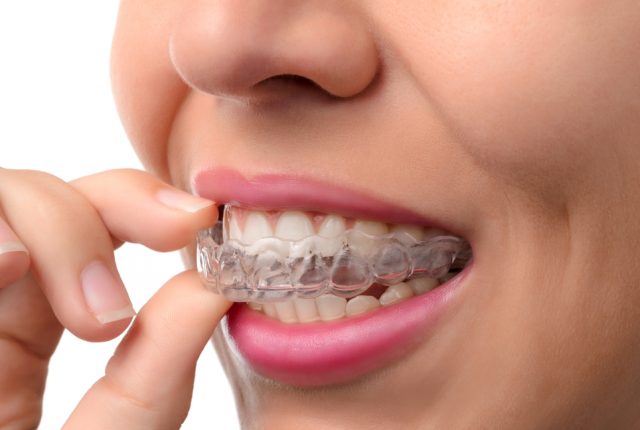 Mouth guards are coverings worn over teeth, and often used to protect teeth from injury from teeth grinding and during sports.
Mouth guards are coverings worn over teeth, and often used to protect teeth from injury from teeth grinding and during sports.
Types of mouth guards :
Stock mouth protectors : are preformed and come ready to wear. They are inexpensive and can be bought at most sporting good stores and department stores.
Boil and bite mouth protectors : also can be bought at many sporting goods stores and may offer a better fit than stock mouth protectors. The "boil and bite" mouth guard is made from thermoplastic material. The "boil and bite" mouth guard is made from thermoplastic material. It is placed in hot water to soften, then placed in the mouth and shaped around the teeth using finger and tongue pressure.
Custom-fitted mouth protectors : are individually designed and made in a dental office or a professional laboratory based on your dentist's instructions. First, your dentist will make an impression of your teeth and a mouth guard is then molded over the model using a special material.
Generally, mouth guards cover your upper teeth only, but in some instances, your dentist will make a mouth guard for the lower teeth as well. Your dentist can suggest the best mouth guard for you
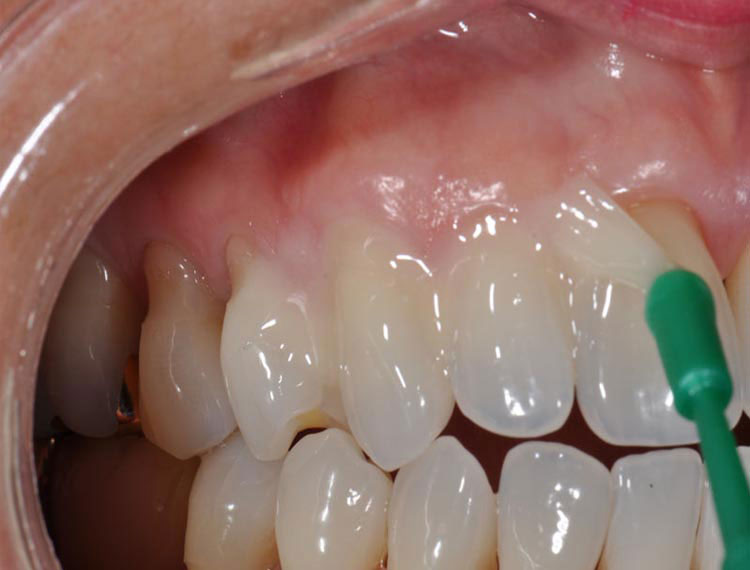 Sensitive teeth, certain activities, such as brushing, eating and drinking, can cause sharp, temporary pain in your teeth. Sensitive teeth are typically the result of worn tooth enamel or exposed tooth roots. Sometimes, however, tooth discomfort is caused by other factors, such as a cavity, a cracked or chipped tooth, a worn filling, or gum disease.
Sensitive teeth, certain activities, such as brushing, eating and drinking, can cause sharp, temporary pain in your teeth. Sensitive teeth are typically the result of worn tooth enamel or exposed tooth roots. Sometimes, however, tooth discomfort is caused by other factors, such as a cavity, a cracked or chipped tooth, a worn filling, or gum disease.
Desensitizing toothpaste :
After several applications, desensitizing toothpaste can sometimes help block pain associated with sensitive teeth. There are a variety of products available over-the-counter. Ask your dentist which product might work best for you.
Fluoride :
Your dentist might apply fluoride to the sensitive areas of your teeth to strengthen tooth enamel and reduce pain. He or she might also suggest the use of prescription fluoride at home, applied via a custom tray.
Desensitizing or bonding :
Occasionally, exposed root surfaces can be treated by applying bonding resin to the sensitive root surfaces. A local anesthetic might be needed.
Surgical gum graft :
If your tooth root has lost gum tissue, a small amount of gum tissue can be taken from elsewhere in your mouth and attached to the affected site. This can protect exposed roots and reduce sensitivity.
Root canal :
If your sensitive teeth cause severe pain and other treatments aren't effective, your dentist might recommend a root canal — a procedure used to treat problems in the tooth's soft core (dental pulp). While this might seem like a significant treatment, it's considered the most successful technique for eliminating tooth sensitivity.
